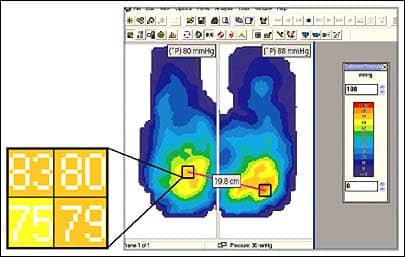AMRA Medical, a digital health company delivering a new standard in body composition analysis through rapid whole-body magnetic resonance imaging (MRI), announces that the results of their Fulcrum-sponsored study highlighting the development and use of a whole-body MRI protocol for muscle analysis are now published in Neurology. The publication demonstrates how clinical investigators can use AMRA’s MRI measurements to accurately and broadly capture the heterogeneity and progression of neuromuscular disorders like facioscapulohumeral muscular dystrophy (FSHD).
In the study, AMRA shows that individual muscle measurements, whole-body composite scores, and functional composite measurements can help capture disease severity in individuals with FSHD. The research shows that functional composite measurements correlate with disease-relevant clinical outcome assessments such as reachable workspace (RWS) and timed-up-and-go (TUG). Also, through test-retest experiments, the data shows that whole-body composite scores are stable and reproducible between scans, suggesting the MRI protocol’s utility for longitudinal studies.
AMRA’s MRI protocol was used on 17 individuals with FSHD. Participants underwent an MRI scan and completed standardized functional assessments (RWS and TUG) at two separate visits approximately 4 to 12 weeks apart. Following whole-body MRI, researchers calculated muscle fat fraction (MFF), lean muscle volume (LMV), and muscle fat infiltration (MFI) for each muscle. Using these measurements, they generated two types of composite scores per individual: (1) functional cross-sectional composite scores and (2) whole-body composite scores.
The functional cross-sectional composite scores, which describe the total LMV, MFF, or MFI for a group of muscles, were analyzed for correlation with functional tests. The results of the study support that functional composite scores are reliable clinical endpoints as they correlate with functional outcomes.
Whole-body composite scores were generated by including measurements of an individualized set of muscles at high risk for progression within each patient. The muscles included in the whole-body composite scores were determined by staging each muscle using its MFF and MFI values. By grouping muscles with similar characteristics together, the treatment response in normal, still unaffected muscle tissue can be evaluated separately from muscle tissue already showing signs of the disease where the fastest progression is expected.
In this study, the researchers evaluated the reproducibility of the whole-body composite scores. The results support the use of these scores in longitudinal studies as a reliable clinical end-point to monitor disease progression or a response to therapy over time.
Recent FSHD clinical trials exemplify the usability of composite scores as key clinical endpoints. For instance, Fulcrum’s ReDUX4 trial, which demonstrated that losmapimod slowed disease progression and improved function in people with FSHD, revealed RWS and composite scores describing MFI are reliable measures of disease progression. Future research incorporating AMRA’s protocols could help establish whole-body MRI-based measurements as quantitative endpoints in clinical trials for neuromuscular diseases.
[Source(s): AMRA Medical, PR Newswire]





